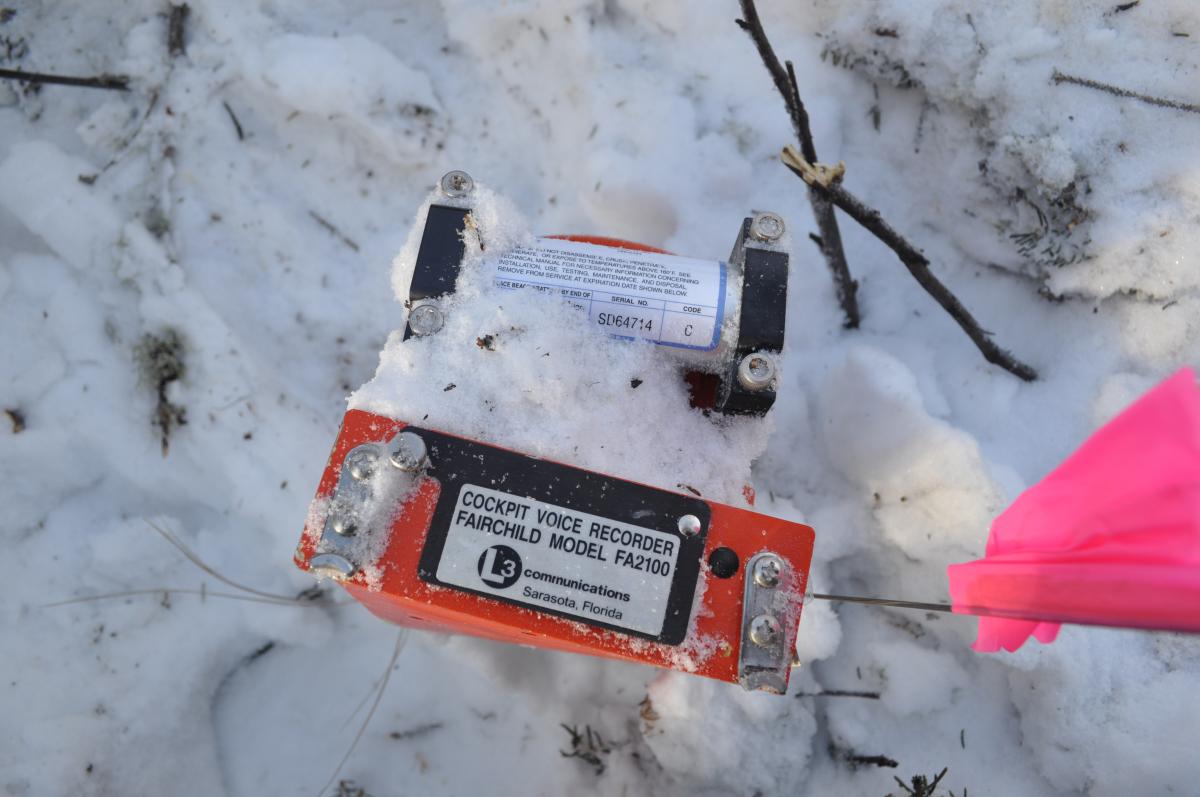Loss of control and collision with terrain
Air Tindi Ltd.
Beechcraft King Air 200, C-GTUC
Whatì Airport, Northwest Territories, 21 NM ESE
The occurrence
At 0851 Mountain Standard Time on , the Air Tindi Ltd. Beechcraft King Air 200 aircraft (registration C-GTUC, serial number BB-268) departed Yellowknife Airport (CYZF), Northwest Territories, as flight TIN503, on an instrument flight rules flight itinerary to Whatì Airport (CEM3), Northwest Territories, with 2 crew members on board. At 0912, as the aircraft began the approach to CEM3, it departed controlled flight during its initial descent from 12 000 feet above sea level, and impacted terrain approximately 21 nautical miles east-southeast of CEM3, at an elevation of 544 feet above sea level. The Canadian Mission Control Centre received a signal from the aircraft’s 406 MHz emergency locator transmitter and notified the Joint Rescue Coordination Centre in Trenton, Ontario. Search and rescue technicians arrived on site approximately 6 hours after the accident. The 2 flight crew members received fatal injuries on impact. The aircraft was destroyed.
Media materials
News release
Flying with partial instruments led to a 2019 loss of control and collision with ground near Whatì Airport, Northwest Territories
Read the news release
Deployment notice
TSB deploys a team of investigators to an aircraft accident northwest of Yellowknife, Northwest Territories
Edmonton, Alberta, 31 January 2019 - The Transportation Safety Board of Canada (TSB) is deploying a team of investigators to an air accident involving a Beech King Air 200 operated by Air Tindi that occurred northwest of Yellowknife, Northwest Territories. The TSB will gather information and assess the occurrence.
Class of investigation
This is a class 3 investigation. These investigations analyze a small number of safety issues, and may result in recommendations. Class 3 investigations are generally completed within 450 days. For more information, see the Policy on Occurrence Classification.
TSB investigation process
There are 3 phases to a TSB investigation
- Field phase: a team of investigators examines the occurrence site and wreckage, interviews witnesses and collects pertinent information.
- Examination and analysis phase: the TSB reviews pertinent records, tests components of the wreckage in the lab, determines the sequence of events and identifies safety deficiencies. When safety deficiencies are suspected or confirmed, the TSB advises the appropriate authority without waiting until publication of the final report.
- Report phase: a confidential draft report is approved by the Board and sent to persons and corporations who are directly concerned by the report. They then have the opportunity to dispute or correct information they believe to be incorrect. The Board considers all representations before approving the final report, which is subsequently released to the public.
For more information, see our Investigation process page.
The TSB is an independent agency that investigates air, marine, pipeline, and rail transportation occurrences. Its sole aim is the advancement of transportation safety. It is not the function of the Board to assign fault or determine civil or criminal liability.
